Toyota In Forza Horizon 4 – What Happened?
Toyota caused an uproar by blocking Forza Horizon 4 from including their cars in the game, despite being included in Gran Turismo Sport. We’ll be explaining what went down in this guide.
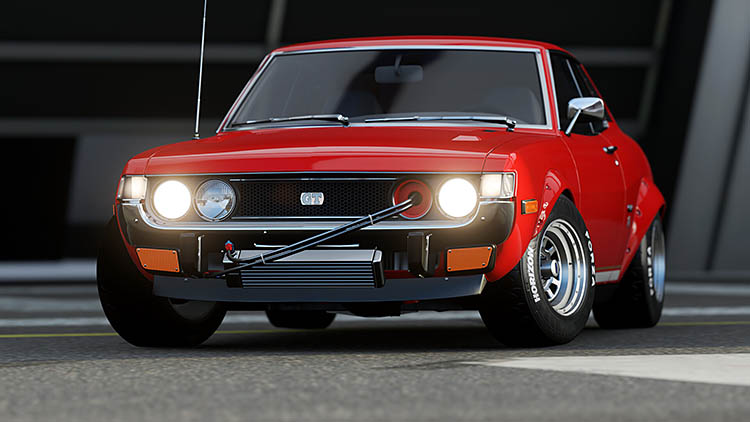
- Toyota’s Exclusion in Forza Horizon 4
- Current Toyota Cars in Forza Horizon 4
- Will Toyota Feature in Forza Horizon 5 and Forza Motorsport 8?
Toyota’s Exclusion in Forza Horizon 4
The MKIV Toyota Supra is arguably one of the most cherished cars’ in the drifting world. Not only that, but it’s also got an incredible reputation across the entire motorsport sector, particularly in drag racing.
And, let’s not forget the Toyota AE86, which quite literally provided the world with drifting, given that it was the Drift King Keiichi Tsuchiya’s weapon of choice.
You only have to spend a few minutes looking online before you’ll come across some epic touge footage, as he pushes the Trueno to its limits.
Since then, the humble AE86 has become a cult classic in the drifting world, and the Hachi Roku prices have continued to shoot up in value.
The AE86’s popularity was also boosted by the immense popularity of the Initial D anime and manga series in Japan, which sees a young tofu delivery driver’s climb up the ranks of the Japanese touge racing scene.
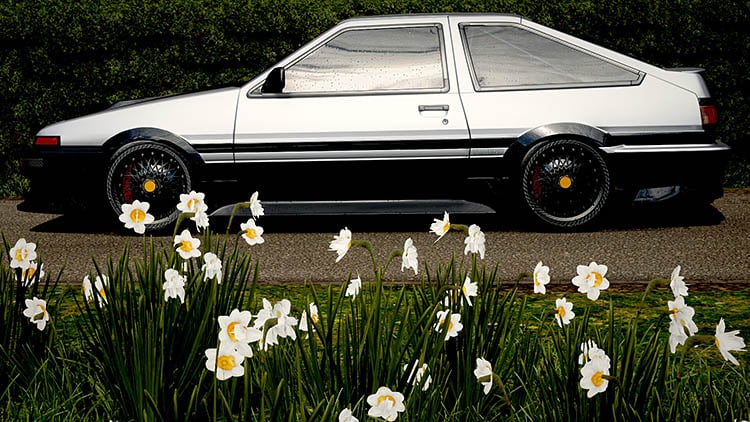
If the AE86 and the Supra’s popularity weren’t enough, let’s not forget about Toyota’s latest attempt at blowing away the drifting industry - the GT86.
The modern-day update for the AE86 featured a lightweight, rear-wheel-drive platform, with skinny rear wheels that made the perfect low-powered drift package the second it rolled out of the showroom.
From there, the aftermarket tuning scene turned it into an absolute weapon, capable of battling against some of the finest drift cars on the planet, thanks to a variety of turbo and supercharger kits, alongside upgraded handling mods.
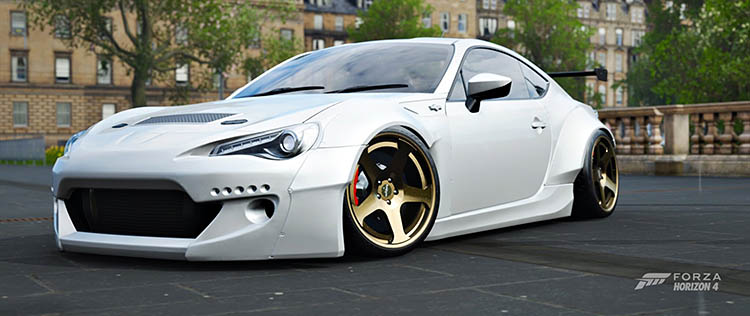
So, given that these are just three of several prominent Toyota platforms that dominate the drifting and tuning world, they’re the perfect cars to feature in Forza Horizon 4, and their initial inclusion is an absolute no-brainer, right?
Unfortunately, this wasn’t the case.
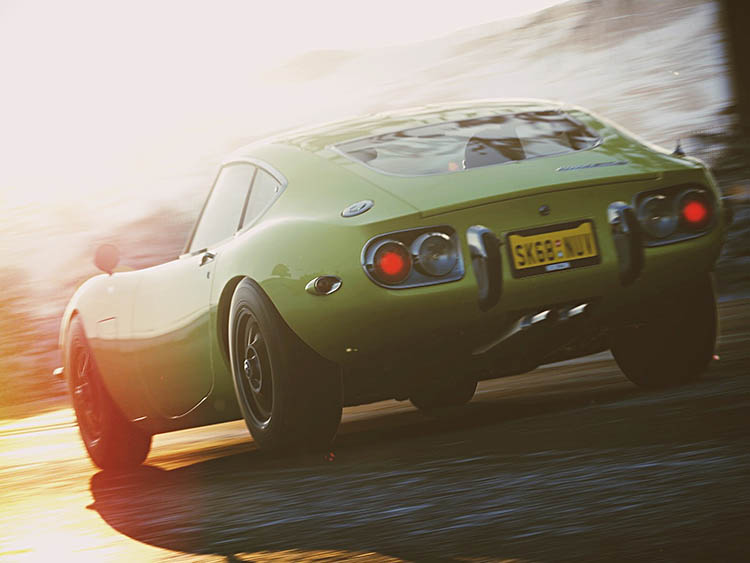
Not only did they block Horizon from including Toyota cars in the game, but they also opted to boycott both the Forza Motorsport and the likes of the Need For Speed franchise from including any of their desirable tuner cars.
While this was happening, they provided Horizon 4 with the Hilux, Land Cruiser, and even a Baja truck on release, which, unfortunately, weren’t what most Toyota fans were after.
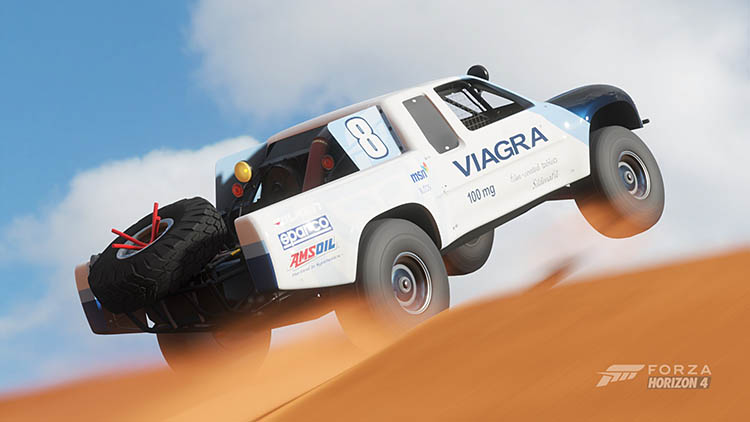
Something was up, and Toyota’s responses to fans’ growing frustrations continued getting weirder as Toyota UK stated that they don’t “promote illegal street racing” on their social media feeds.
A statement which they later retracted, which didn’t help make things any less odd.
However, they did go on to state the following: “Officially, Toyota Motor Corporation has no concrete plans to license its model range to any other games besides Gran Turismo Sport at the moment”,
They then went on to state, “We’ll be really excited to share our future plans with you as soon as we’re able to”.
So, while Gran Turismo fans got to enjoy the full Toyota line-up in all its glory, it was looking increasingly likely that Toyota had kept tight-lipped about signing an exclusive deal with Sony.
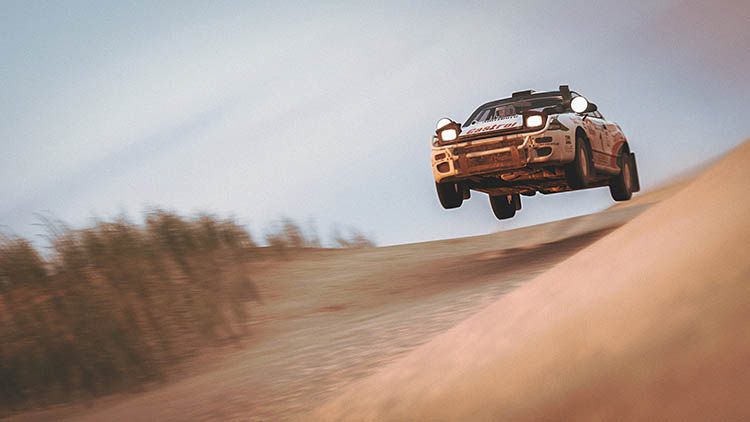
When questioned about the situation, a Toyota Exec stated, “Home game machines are no good. Playing something that realistic makes the need for cars disappear”.
It was clear that Toyota had somehow concluded that video games were partially to blame for their slump in sales, but we’re pretty sure that it didn’t justify their inclusion in the GT series.
Even so, we feel it’s ridiculous to claim that just because people can enjoy driving a car from the comfort of their home rig, they’re not going to go out and buy one.
If anything, we’ve found it’s the opposite! I can’t even begin to remember how many times I’ve wanted to get behind the wheel of a car after being provided with a taster on a VR gaming rig.
As Toyota continued to fuel the fire of the rumors of an exclusive partnership with Sony, it would take two years, from the 2017 launch of GT Sport, right through to 2019, before providing any official updates on the situation.
Then, out of nowhere, they stunned the Horizon community with the ultimate news:
Forza and Toyota have joined forces once again! It all starts on December 12th when #ForzaHorizon4 players can get behind the wheel of the 1998 Toyota Supra RZ as a part of the Series 17 update. pic.twitter.com/7WhGjIqsys
— Forza Motorsport (@ForzaMotorsport) November 19, 2019
Not only was the MKIV Toyota Supra on its way, but it was a free addition to the game.
The epic news didn’t end there either, as the Supra was the first of many cars that they would soon release to the Horizon franchise.
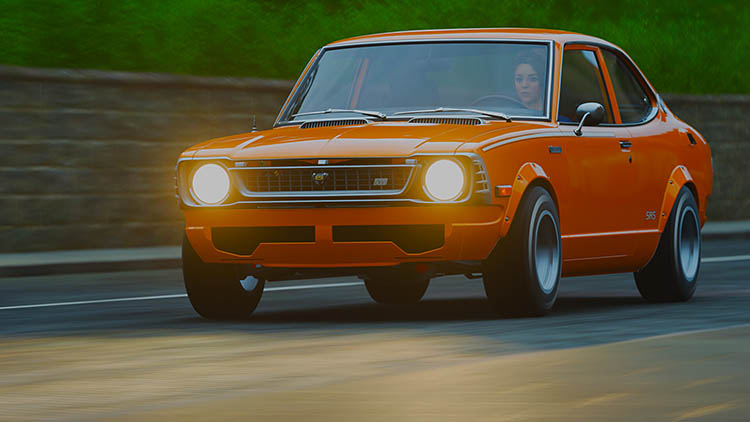
Suddenly, illegal street racing doesn’t seem so bad, after all. Huh, Toyota?
Their earlier street racing comments were made even weirder by the fact that, even in 2020, Toyota still hasn’t made a ‘real’ return to the Forza Motorsport series, besides a few race-spec NASCAR’s and trucks. Yawn.
But nope, it was purely a coincidence and wasn’t an expired two-year exclusive licensing deal with Sony or anything. *cough*
As weird as it was, we certainly weren’t complaining, and we’re sure the rest of the racing gaming community felt the same way.
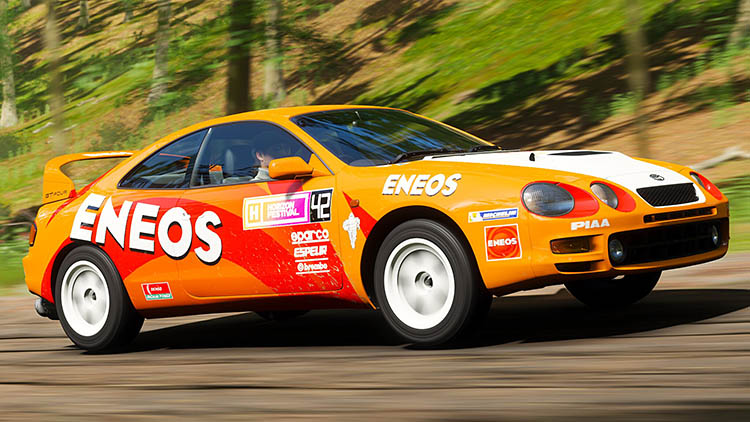
Thankfully, alongside Toyota, Lexus also arrived soon after to join in with the street racing antics, and in the present day, we’re able to tear up the LFA, IS-F, and RC-F models on the streets of the UK.
Brian Ekberg, the Community Manager for Turn 10 Studios, has since claimed that the brands will remain within the franchise for “years to come”, with the possible inclusion of Scion further down the line, too.
Despite both Toyota and Lexus’s re-incarnation, many racing fans are still eagerly awaiting Tesla after Mitsubishi’s return, given that both manufacturers featured in the previous Forza Horizon 3 series.
Between Forza Horizon 3 and 4, which is the better game for you? Here’s what we think.
Current Toyota Cars in Forza Horizon 4
Since launching in 2018, Forza Horizon 4 has gone on to become one of the highest-regarded racing games of all time, with over 12 million players enjoying the open-world experience that the game provides.
Given that Microsoft produced the game, it’s only available on both the Xbox and PC gaming platforms.
Considering it was never available for the PS4, we’re sure you’ll agree that they’re pretty solid sales figures, especially for a dedicated racing game.
Despite Sony having a direct competitor to the Forza Motorsport series with Gran Turismo, they’re yet to challenge Horizon.
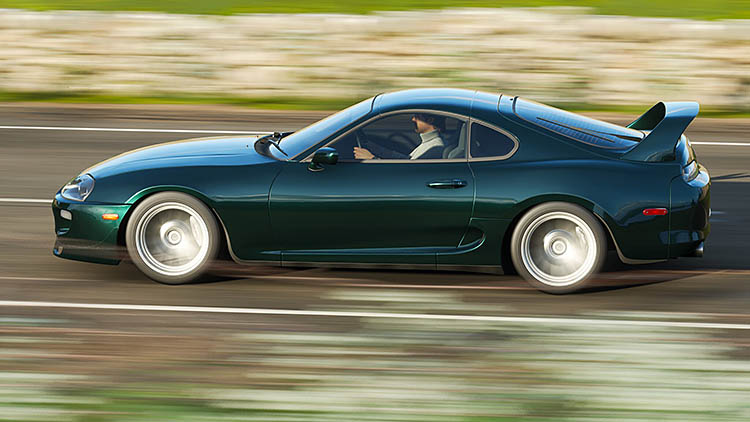
Given their more formal approach to the motorsport industry so far, we wouldn’t be surprised if we never see a Sony equivalent.
As time has progressed for the Horizon series, countless updates have provided more than 690 in-game vehicles, partly thanks to the Toyota range’s addition over the past year.
After waiting for two years for Toyota to include the Supra and the AE86, they soon began making up for the lost time as they continued to provide the fans with more coveted cars from their incredible range.
In the present day, we’re now gifted with fourteen Toyota’s to choose from, and with the Forza Horizon 5 release date still not being announced, we wouldn’t be surprised if the Japanese manufacturer adds even more cars to the roster before then.
Here’s the full list of Toyota’s that you’ll be able to choose from in Forza Horizon 4:
1969 Toyota 2000GT
Toyota’s 2000GT (MF10) is the impressive result of the Japanese giants’ collaboration with Yamaha, as they set out to revolutionize the automotive industry way back in 1965.
This front-engine, rear-wheel-drive, two-seater grand tourer was produced between 1967 and 1970 and built to be a direct competitor for the hugely popular E-Type Jaguar.
The ‘halo car’ was a limited production model, with just 337 units ever being produced.
Despite initially being intended for Nissan to replace the Datsun 2000 Roadster, the Toyota 2000GT has become one of the most desirable JDM cars of all time, and with such a limited production run, it will come as no surprise that it also comes with a hefty price tag in the real world.
Although they rarely come up for sale, the last model went for an incredible $1.2 million, which was in 2013!
In Forza Horizon 4, this a “Hard-to-Find” vehicle (despite being available for just 80,000 CR in Horizon 3), which means you won’t be able to purchase it via the Autoshow.
However, those of you that fancy some old-school drifting action will be able to get your hands on it via the Auction House.
Despite Toyota providing the 2000GT with just 150 hp and 130 ft/lb torque from the factory, you’ll be able to easily unlock its power potential in Forza Horizon 4 for the ultimate luxury sleeper.
Once purchased, a wide range of engine swaps are available, along with a potential AWD drivetrain swap and a choice of a single turbo or a supercharger.
1974 Toyota Celica GT
Next up in Toyota’s line-up is the Toyota Celica GT, also known as Toyota Celica ’74.
After being unveiled at the Tokyo Motor Show at the end of 1970, before launching to the market in the same year, the Celica was the Japanese giants’ attempt at rivaling the Ford Mustang.
Weighing in at 2,2000lbs, it was significantly lighter than the Mustang, and despite having just 97 hp from the 2.0 engine. The reduced weight undoubtedly helped it keep up with the 105 hp produced by the ‘Stang.
Many enthusiasts saw the Celica GT as an affordable and far more available alternative to the 2000GT.
The Celica continued using the rear-wheel-drive platform until 1985, where it utilized FWD and AWD drivetrains (with the GT-Four variants) for the remainder of its lifespan before Toyota eventually ceased production in 2006.
When it comes to tuning the Celica GT in Horizon 4, you’ll have a range of options, from an AWD drivetrain to a wide variety of engine swaps and also forced induction.
If you’re into unique body styling on old-school rides, then make sure you check out the widebody conversion.
1974 Toyota Corolla SR5
Although the SR5 isn’t the most desirable of the Corolla’s, it’s an excellent opportunity to build something slightly different from the norm.
The SR5 was Toyota’s competitor to the Datsun 510, with a front-engine, rear-wheel-drive layout, alongside a naturally aspirated 1.6L four-cylinder engine, which produces 88 horsepower and 91 lb/ft torque.
Despite being lower in power than the Datsun 510, which had 96 horsepower, it’s more favorable in the weight department, coming in at 62 lbs (28kg) lighter.
1985 Toyota Sprinter Trueno GT Apex
The much-loved AE86 Hachi Roku is a significant addition to the game that loyal drift fans had been eagerly awaiting.
Although you won’t be able to throw it down on Fujimi Kaido, the British countryside is a well-suited alternative for this perfect-handling low-powered cult classic.
The Trueno was Toyota’s fifth-generation and last-ever RWD Corolla to be released, as they went on to replace it with the dreaded FWD drivetrain for the remainder of its lifespan. (WHY, Toyota?!)
Not only was the AE86 one of the best drift platforms ever created, but despite being just 1.6L and pushing out 128 hp, the 4A-GE provided the perfect companion for the exceptional-handling lightweight chassis.
However, if you feel that’s not enough power for you, even on the tight and twisty UK roads, there are six engine conversion variations to choose from in the game, as well as four aspiration conversions.
Although the Corolla remained FWD beyond this point, Toyota thankfully came to their senses, later releasing the game-changing Toyota GT86 to the modern-day market in 2012, which immediately took the drifting world by storm.
With the official confirmation of the Toyota GR86 arriving recently, Toyota certainly isn’t finished with the 86 legacy just yet.
1989 Toyota MR2 SC
Also known as the AW11 Toyota MR2 ’89, Toyota shocked the motoring industry with the launch of this mid-engine, RWD two-seater sport compact, having shifted their focus to economy vehicles at the time.
The unique MR2, which is the first Japanese mid-engined two-seater ever produced with ‘SC’ stating that this is the roots-type supercharger variant, which featured 145 hp and 140 ft/lb torque from the 1.6L inline-four weighing in at just 2,620 lb (1,188 kg).
Although snappy and sometimes unpredictable, with the correct tuning, the MR2 has the potential to be transformed into a fun and unsuspecting sleeper.
1992 Toyota Celica GT-Four RC ST185
Toyota only ever produced 5,000 AWD GT-Four RC ST185’s to enable them to meet the Group A Rally homologation requirements.
This turbocharged four-cylinder variant provides 10 hp more than the original GT-Four, at 232 hp. The race-modified ST185 went on to win the 1992-94 Drivers Championships and 1993-94 Manufacturers Championships, making it Toyota’s most successful rally car.
The ST185 later went on to be replaced with the ST2005 in 1994, as Toyota introduced their sixth-generation.
1992 Toyota Supra 2.0 GT
The older brother of one of the most sought-after JDM cars of all time, the third-generation MKIII Supra, is often underrated, being left in the shadows of its younger sibling.
As the Celica switched to FWD, the Supra thankfully remained loyal to the RWD platform.
Utilizing a 2-liter inline-six 1G-GTE powerplant with twin-parallel turbochargers, this could push out 206 hp and 203 ft/lb torque at 11 PSI of boost in stock form, but it was certainly capable of far more, which you’ll be able to prove with the in-game Upgrades easily.
The MKIII is gifted with a wideboy kit in the game, alongside engine swaps, a potential AWD drivetrain upgrade, and a single-turbo conversion.
After Toyota discontinued the MKIII in 1993, it was soon replaced with the legendary MKIV. You’re able to play with the 1998 model in the game, with the incredible 2JZ engine.
1993 Toyota #1 T100 Baja Truck
The Baja truck was one of the original vehicles provided to the series before Toyota later did a U-turn on their cars’ inclusion.
There was also a DLC ‘Welcome Pack’ alternative, with both on offer in the Autoshow for 500,000 CR.
With 340 hp on offer in stock form, the Baja truck is excellent for when you’re looking to plant the pedal to the metal and get somewhere quickly, tearing up the British landscape in the process.
1994 Toyota Celica GT-Four ST205
The Celica GT-Four ST205 was the ST185’s successor and another car built to meet the required homologation requirements of Toyota’s Group A Rally desires.
With just 2,500 production models, this enabled Juha Kankkunen in contention for the 1995 WRC title before Toyota was busted for their use of illegal turbo restrictors, which left them banned from competing for the remainder of the season.
This sixth-generation Celica was the final all-wheel-drive model that Toyota made, producing 255 hp thanks to a turbocharger addition on the 3S-GTE motor.
There are various engine upgrades and an RWD conversion in the Upgrade Shop, should you wish to have some Celica drifting fun!
1995 Toyota MR2 GT
The younger brother of the earlier 1989 Toyota MR2 SC has gained an enormous following in the tuning scene over the years, with many opting for engine swaps to turn them into insane track builds.
This second-generation SW20 GT follows on with the mid-engine, rear-wheel-drive layout of its predecessor, and many agree that the GT was the most pleasing looking MR2 ever produced and has some hints of Ferrari styling.
The GT shares the 3S-GTE powerplant with the Celica GT-Four RC ST185 and 205, but they’ve managed to pump out 241 hp and 228 lb/ft torque from the turbocharged engine to provide the fastest MR2 Toyota ever produced.
1998 Toyota Supra RZ
Here it is, the moment you’ve all been waiting for, the JDM-lovers dream ride, the 1998 Toyota Supra RZ.
The MKIV Supra also found fame across the world with The Fast and the Furious franchise, since becoming one of the most sought-after cars on the planet.
Not only does it look incredible, but you’ll also find the infamous 3.0L twin-turbo 2JZ engine (well, 3.0L I6 - TT) under the hood, which is often regarded as quite possibly the most exceptional tuner engine of all time.
Although it has just 320 hp and 315 ft/lb torque in stock form, we recommend heading to the Upgrade Shop to establish its true potential.
The Supra was later re-launched with the BMW-powered Toyota GR Supra, which is yet to feature in the Forza franchise.
2007 Toyota Hilux Arctic Trucks AT38
The Hilux Arctic is another of the original trucks that featured in the game before the inclusion of the sought-after cars.
This modified Hilux is explicitly built to handle the coldest and harshest climates and Icelandic expeditions, so we do not doubt that it can handle whatever the British winter decides to throw at it with ease!
2013 Toyota GT86
The GT86 certainly needs no introduction and has undoubtedly become one of the most popular drifting choices among gamers after its return in Update 27.
The ‘Toyobaru BR86’ birthed both the Subaru BRZ and the Scion FR-S, with the GT86 designed for the European market, while the BRZ and FR-S set sights at America.
As the successor to the much-loved AE86, the GT86 changed the game by providing an affordable, lightweight rear-wheel-drive platform to the modern-day market.
Many believe that the naturally aspirated 2-liter powerplant lacks power at just 197 hp and 151 ft/lb torque, but the in-game turbo and supercharger kits will help with that.
Alternatively, there is also a tasty selection of engine swaps available.
Not only that, but there’s also the Rocket Bunny widebody kit, which will completely transform the look of the car, providing the ultimate drift-ready platform.
As the world waits with anticipation for the confirmed Toyota GR86, it seems that the 86 platform will continue to live on for the foreseeable future.
2016 Toyota Land Cruiser Arctic Trucks AT37
The final and newest car on our list is another truck included with the original game and another Icelandic expedition vehicle.
If you prefer the Land Cruiser to the Hilux for your off-road intentions, then this is going to be the perfect choice for cruising across the open landscape at full throttle.
Will Toyota Feature in Forza Horizon 5 and Forza Motorsport 8?
Many Toyota enthusiasts have been eagerly awaiting news surrounding the manufacturers’ inclusion in both Forza Horizon 5 and the confirmed upcoming ‘Forza Motorsport’ title.
With only three definite cars confirmed for the next-gen Forza Motorsport game so far, the current line-up is as follows:
- Apollo IE
- BAC Mono
- Mazda #70
They’ve also dropped some strong hints that the Donkervoort D8 GTO will also feature, but there’s no official confirmation just yet.
However, Brian Ekberg, the Community Manager for Turn 10 Studios, has claimed that the Toyota and Lexus brands will be remaining within the franchise for “years to come”, which provides a lot of optimism for the future.
We’re not entirely sure why Forza Motorsport 7 never received the additional Toyota cars when Forza Horizon 4 did, especially given Toyota’s aggressive approach to the street-racing scene.
It’s looking optimistic that any issues that once caused conflict between Toyota and Microsoft are now resolved and that we can begin enjoying their incredible vehicles in the future next-gen Forza Motorsport and Forza Horizon games.
So, there we have it! We hope that we’ve covered everything you could want to know about Toyota’s in Forza Horizon 4 in this guide.
Thank you for reading our Forza Horizon 4 Toyota guide.
If you enjoyed this article, please share it with the buttons at the bottom of your screen. If you’ve found this information useful, then please take a moment to share it with other Toyota, Forza Horizon, and Forza Motorsport enthusiasts. We appreciate your support.
Photography credits
We thank the following entities for the use of their photography in this article:

















